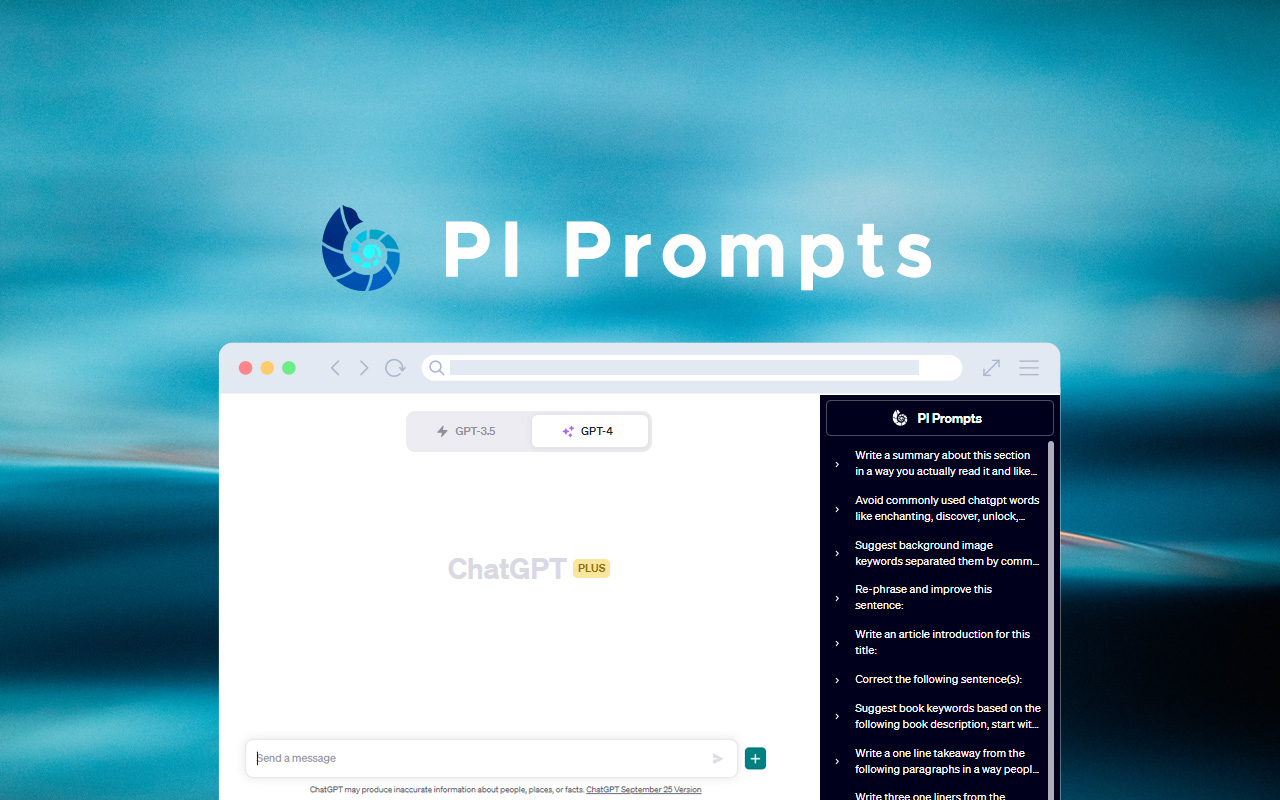Top 8+ AI Prompt Engineering Books for 2024 – Learn Generative AI Prompts (Updated)
The cover image was created by Stable Diffusion using prompt “beautiful hair woman, storybook illustration, phosphor display, cinematic lighting, satin dress –test –testp”
Hence some of these above parameters seem strange at first glance for a picture, but actually if you understand prompt engineering they seem more and more essential to reach the right output.
With artificial intelligence being more and more present in our lives, prompt engineering is likely to be among the industries of the future.
In What Areas Will Be Prompt Engineering Essential?
Basically every area where Generative AI is present, including
- Image generation models (including Dall-E, Midjourney, Stable Diffusion)
- Text generation models (including ChatGPT, LaMDA, GPT-3 based apps)
If I want to simplify what prompt engineering is, than I would say the language how we communicate with generative AI models. Basically, tasks are given in the input as questions and descriptions.
A ChatGPT Sample
Let's say you read all the Harry Potter books, and you want to create your own fan story. But you don't have the time to write the story itself, only the story's outline is in your head. In this case you simply go to ChatGPT (or similar) tools and write a prompt.
“Could you write me an angry conversation between Harry Potter and Hermione Granger, where Harry explains he is simply loves another girl Fleur Delacour. Write the conversation in J. K. Rowling style.”
And ChatGPT writes to conversation to you in seconds.
Harry: “Hermione, we need to talk.”
Hermione: “What is it, Harry? You look upset.”
Harry: “I am. I've been thinking about this for a while, and I need to tell you something. I love someone else, Hermione. I'm sorry.”
Hermione: “What? Harry, no! Who is it? Is it that Delacour girl? I knew you two were getting close, but I never thought you'd actually fall for her.”
Harry: “It's not just that I'm close with her, Hermione. I love her. I'm sorry if this hurts you, but I can't help how I feel.”
Hermione: “Harry, how could you do this to me? After everything we've been through together, you just throw it all away for some French girl? I can't believe you!”
Harry: “I know it's hard for you to understand, Hermione, but my feelings for Fleur are real. I never meant to hurt you, but I can't deny how I feel.”
Hermione: “I can't believe you, Harry. I thought we were friends, but I see now that I meant nothing to you. Fine, go and be with your Delacour girl. I never want to see you again.”
Harry: “Hermione, please don't say that. I never wanted to hurt you, but I can't change my feelings. I hope someday you can forgive me.”
Hermione: “I don't know if I can forgive you, Harry. Right now, all I feel is anger and betrayal. I need some time to process this.”
Creating a fictional story is that simple, and the limit is only your creativity.
Whether you're into AI prompts, or you're just fascinated by technology, you might have heard of concepts like chatGPT or Dall-E. These books won’t just tell you more about such things, but they’ll also introduce you to an industry that will most likely change the world.
With these thoughts in mind, here are some of the best books on AI prompts out there.
How To Create Your Own Prompt Library?
For this purpose we use the free PI Prompts Chrome Extension. This very simple tool could save and sync your prompts across your devices. It appears on the right hand side of ChatGPT and has a very intuitive interface. Find an illustrated guide how to use it.

What Are The Best Prompt Engineering Books?

The Art of Prompt Engineering with ChatGPT, by Nathan Hunter (2023)
This book is a comprehensive guide dedicated to providing an in-depth understanding of OpenAI's ChatGPT and its applications. The Art of Prompt Engineering with ChatGPT includes content, which encompasses useful techniques, tools, and use cases for optimizing the utilization of ChatGPT.
The book also includes two new sections covering advanced prompt engineering (APE) and GPT-4. The APE section provides insights into how to co-create and format outputs for desired results. The GPT-4 section focuses on guiding users on leveraging the latest iteration of the AI, debunking past hype, and highlighting new improvements. The book remains an evolving resource, continually updated to keep pace with the growth and development of ChatGPT.
The book is organized into six parts, with each section tackling different aspects of ChatGPT and GPT-4 usage and applications.

A.I. Whisperer, by R.E. Tessier (2023)
After reading A.I. Whisperer: A Guide to Prompt Engineering Large Language Models, I think it's a good – but little bit short with it's 49 pages – read for anyone wanting to get more from AI and LLMs.
The book breaks down the details of prompt engineering in a clear and straightforward way. What stood out to me were the real-world examples. As experience with large language models accumulates, increasingly better books are being released. This is evident as the author demonstrates a profound understanding of how prompt engineering works.
The book gives a clear picture of why good prompt design matters. The tips and strategies shared were practical and easy to follow. It's clear that a lot of thought went into this guide. If you're interested in AI and how to interact with it better, this book is worth your time. I found it really useful and think others will too.

An Illustrated Guide to AI Prompt Mastery, by Jack Wylder (2022)
Computers changed the world, and once they made it to everyone's home, people started using them for different ideas. Art is one of them. Initially introduced in the 1970s, digital art has reached an unusual level lately.
Let me make it clear. Many movies you’re watching today are based on digital art, that’s how realistic it becomes.
Unless you live in a cave, you might have heard about NFTs too, which took the world over by storm last year. Everyone’s rushing to create their own artwork and hit the jackpot.
Anyone can do anything, and the author has a pretty good point of view claiming that this idea isn't too encouraging for new users. Where do you begin? How do you create an art? How do you make it look realistic?
Well, this book answers all these questions. It features impressive illustrations to make guidance much easier, and personally, I find it more straightforward as well. There are more styles explained, as well as a deeper insight into how AI prompts help computers interpret art.

Prompt Engineering, by Padmaraj Nidagundi (2022)
This book on AI prompts is not for everyone, but mostly for engineers, students, or those who want to pursue a career in this field.
The book takes you from scratch, that’s what I like the most about it. If you have no clue where to start, you’ll be given step by step instructions on how to improve yourself and eventually turn into a professional.
It’s well-structured into more chapters. For example, the first chapter is about the history of prompt engineering. By reaching the fifth chapter, you'll know transformation based on models and even API.
I know it sounds complicated to a complete newbie, but you'll go through all these steps one thing at a time.

The Art of Prompt Engineering with chatGPT, by Nathan Hunter (2023)
ChatGPT is rated the future of AI programming, and for some good reasons. It can automate many actions and complete the job almost perfectly.
I have heard about it before, but I never found it too useful. Maybe because I had no clue about its full potential. If you’re in the same situation, this book will change everything for you.
The best part is probably in the beginning, when you’ll learn the four core techniques to write quality prompts. Everything else is based on what you learn here.
There are use cases to help you understand how to apply such techniques, a bunch of exercises that will stimulate you to learn while working, illustrations, and accessible language.
More importantly, even if you’re not familiar with the jargon, everything is explained in a friendly tone, without too many technical terms.

ChatGPT Prompts Mastering, by Christian Brown (2023)
I recommend the previous title for a deep introduction to chatGPT and the possibility to build a foundation. Then, you need to push farther and the previous title can only help you to a limit.
This is when Christian Brown’s book on prompt engineering kicks in. It’s a more comprehensive guide that will teach you about clarity and effectiveness in chatGPT prompts.
It makes no difference how advanced you are, the book will make it fairly clear. But then, if I had read it without a foundation, I would've found it a bit difficult.
Sure, it goes into the principles of AI prompts and how they work, but I still believe you need just a bit of experience.
I think this book may help you to improve your skills and teach you how to use your imagination, but it also comes with numerous practical examples.

Mastering ChatGPT and Prompt Engineering, by Cuantum Technologies (2023)
This LLM prompt engineering book is a comprehensive guide presented by Cuantum Technologies that explores the realm of prompt engineering with state-of-the-art AI language models like GPT-3 and GPT-4. Tailored for both AI novices and experts, the book offers a step-by-step tutorial from the foundational knowledge of language models to sophisticated techniques and strategies. Readers will be acquainted with vital topics such as designing efficient prompts, addressing ethical concerns like bias and privacy, and utilizing AI-powered models for tasks like content generation, sentiment analysis, and more.
With numerous real-world applications and practical examples, the book emphasizes the significance of AI in reshaping various industries and underlines the need for ethical, transparent, and responsible AI deployments.
This guide serves as an essential tool for those eager to harness the vast potential of AI-powered language models in their projects and careers.

Story Engineering, by Larry Brooks (2011)
Prompt engineering is a different kettle of fish. It begins with the architecture of storytelling. AI is not all about design and technology, but also about telling a story.
In fact, I believe telling a story is its greatest potential.
You’ll learn to see the big picture and tell stories at a professional level. There are four elemental competencies explained, as well as two executional competencies.
I could go into smaller details, but I don’t want to ruin it for you.
This book is not just about training yourself, but also about discovering concepts that can change your vision on AI prompts.
Some Further Resources and Tools
- AI Scores · An AI directory collects prompt engineering tools
- Promptomania · An AI art prompt generation tool developed for Midjourney, but also good for DreamStudio, Stable Diffusion and CF Spark
- Lexica.art · A Stable Diffusion art gallery and search engine
- AI Prompt List · A ChatGPT prompt collection
- PromptHero · Shared AI prompts for visual art and gallery

Final Thoughts On AI Prompts
AI prompts, and prompt engineering may seem confusing and challenging, but I believe these books and tools can make it look much easier. It's quite important to take them in the right order, though. You don't want to start with something for professionals, but build a foundation first.
My personal opinion on this topic is that prompt engineering is rather an important job of the future. It's like the role of today's editors. AI isn't able to put together unique, creative things, but if we use the right prompts some very fascinating outcome could be produced. All we need is to find the right balance between the human effort and the capabilities of generative AI.
If you want to learn more about the technology behind, read the top GAN books or check out the most important AI books.
My profession is online marketing and development (10+ years experience), check my latest mobile app called Upcoming or my Chrome extensions for ChatGPT. But my real passion is reading books both fiction and non-fiction. I have several favorite authors like James Redfield or Daniel Keyes. If I read a book I always want to find the best part of it, every book has its unique value.







